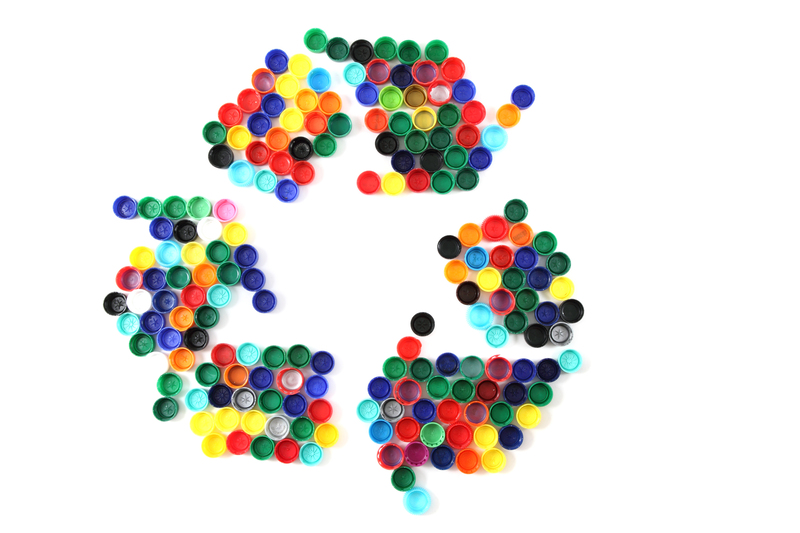Best Practices for Disposing of Personal Protective Equipment Waste
The surge in the use of Personal Protective Equipment (PPE)--such as masks, gloves, gowns, and face shields--has been instrumental in mitigating the spread of infectious diseases like COVID-19. However, improper disposal of PPE waste has led to environmental and public health concerns worldwide. Adopting the best practices for disposing of PPE waste is essential to protect human health, prevent pollution, and comply with local regulations.
Understanding the Importance of Proper PPE Waste Disposal
Personal protective equipment waste disposal is much more than a routine task. Inappropriately discarded PPE can transmit harmful pathogens, litter environments, and introduce microplastics into ecosystems. Here's why responsible PPE waste management is of utmost significance:
- Prevents the spread of infectious diseases: Contaminated masks, gloves, and gowns can serve as carriers of viruses and bacteria.
- Protects sanitation and waste management workers: Proper disposal minimizes the risk of exposure for individuals managing waste streams.
- Reduces environmental pollution: Many PPE items contain plastics or non-biodegradable materials that persist for decades.
- Facilitates recycling and waste minimization: Proper segregation enables the possibility of recycling non-contaminated PPE.
- Ensures compliance with health and waste regulations: Following prescribed guidelines avoids legal repercussions and promotes public health.

Types of Personal Protective Equipment Waste
Different categories of PPE--each with its unique handling and disposal requirements--are widely used across various sectors. Understanding these types will guide the appropriate PPE waste handling procedures.
1. Disposable Masks (Surgical & N95 Respirators)
- Usually made of non-woven fabrics, polypropylene, or polyester materials.
- Can be contaminated with respiratory pathogens and human secretions.
2. Disposable Gloves
- Comprised of latex, nitrile, polyvinyl chloride, or polyethylene.
- Often contaminated after medical, laboratory, or food handling tasks.
3. Gowns and Coveralls
- Single-use items typically found in hospitals, laboratories, and infectious disease units.
- May be soiled with biological or chemical agents.
4. Face Shields and Goggles
- Reusable, though sometimes discarded when scratched or contaminated.
5. Shoe Covers, Hair Nets, and Other PPE
- Used for infection control and general hygiene in clinical and industrial environments.
Environmental Impact of Improper PPE Waste Disposal
The COVID-19 pandemic has triggered a substantial increase in PPE consumption worldwide. According to various environmental studies, billions of face masks and gloves are being disposed of each day--threatening oceans, wildlife, and urban cleanliness.
- Marine Pollution: Discarded PPE often ends up in waterways, where it poses a choking and entanglement risk to animals and leaches microplastics into the marine environment.
- Soil Contamination: Landfilled plastics and microfibers slowly break down, introducing toxins to the soil.
- Aesthetic and Urban Nuisance: Littered face masks are becoming a common sight, affecting cityscapes and public parks.
Key Guidelines: Best Practices for Disposing of PPE Waste
Adhering to recommended PPE disposal methods protects public health and the environment. Below are comprehensive steps and strategies endorsed by health authorities and environmental organizations.
These practices apply to both households and workplaces:
1. Segregate PPE Waste from Other Trash
- Always separate used PPE (especially if suspected contaminated) from regular household and office waste.
- Designate closed bins specifically for PPE in common areas, entryways, or healthcare settings.
2. Bag and Seal PPE Waste Securely
- After removal, place PPE in a durable, leak-proof bag. Avoid compressing items, which can release contaminants.
- Tie or seal the bag tightly. Double-bagging (one bag inside another) provides an extra layer of containment, particularly for visibly soiled or potentially infectious items.
3. Label PPE Waste for Identification
- Mark bags clearly as "PPE Waste" or "Hazardous/Contaminated," especially in healthcare facilities and public institutions.
- Use color-coded bins (red or yellow) following local guidelines to distinguish medical waste from general waste.
4. Minimize Touching and Handling
- Wear new disposable gloves when handling used PPE for disposal, and wash hands thoroughly after.
- Reduce the handling steps--once sealed, dispose of the bag without reopening.
5. Store PPE Waste Temporarily (If Needed)
- If immediate disposal isn't possible, store sealed bags in a secure, isolated area away from children and pets.
- Avoid piling up waste bags. Schedule timely collections with the designated waste management service.
6. Adhere to Local Waste Disposal Regulations
- Check with local health departments or waste management agencies for updated guidelines regarding PPE disposals, such as collection days or drop-off points.
- Follow institutional protocols for hazardous and infectious waste if you work in a healthcare or laboratory setting.
7. Avoid Flushing PPE Down Toilets or Sinks
- Flushing gloves, masks, or wipes can clog drainage and sewage systems, leading to costly repairs and environmental hazards.
8. Encourage the Use of Reusable PPE (Where Safe)
- Employ reusable masks, face shields, and gowns when risks are minimal and guidelines permit. Proper cleaning and disinfection protocols should be followed.
- This approach significantly curbs the overall volume of PPE waste generated.
PPE Waste Disposal in Specialized Settings
Best practices for medical PPE waste disposal, as well as practices suited for schools and public spaces, have specific protocols:
Healthcare and Medical Facilities
- PPE contaminated with blood, bodily fluids, or pathogens is classified as infectious waste.
- Dispose in color-coded (yellow/red) bins with biohazard symbols, following institutional waste policies.
- Autoclaving, incineration, or chemical disinfection may be required before final disposal.
- Staff must be trained on biohazard PPE waste handling practices.
Households and Community Settings
- Seal used PPE in a bag and dispose with regular non-recyclable waste, unless otherwise directed by local authorities.
- Avoid placing contaminated PPE in recycling bins unless explicitly stated it is recyclable and clean.
Workplaces, Offices, and Schools
- Install dedicated PPE disposal points in entryways, common rooms, and restrooms.
- Educate personnel and students regarding proper PPE waste disposal procedures.
Appropriate PPE Waste Treatment and Final Disposal Methods
Once collected, PPE waste disposal methods include:
- Incineration: High-temperature destruction of PPE waste eliminates pathogens and reduces waste to inert ash. Preferred for high-risk (infectious) PPE.
- Autoclaving: Steam sterilization for rendering biological contaminants inactive before landfill disposal.
- Landfilling: For non-infectious, well-sealed PPE waste. Should be done in lined, regulated landfills to minimize leaching and environmental impact.
- Mechanical Recycling: In rare cases, clean and dry PPE made from recyclable materials may be processed through specialized recycling streams.
It is crucial to recognize that most single-use PPE is made from complex polymers that are not accepted in standard municipal recycling. Contaminated PPE must never mix with recyclable waste streams.
Advanced Technologies and Sustainable Innovations in PPE Waste Disposal
Ongoing research is investigating ways to reduce the environmental footprint of PPE waste. Exciting advancements include:
- Biodegradable PPE: Some manufacturers are developing masks and gloves from natural or compostable materials, easing disposal concerns.
- PPE-to-energy conversion: Thermal treatment methods can convert plastic PPE waste into usable fuels or energy in waste-to-energy plants.
- Automated PPE Collection Bins: Hands-free, sensor-triggered bins reduce user contact and improve hygiene during disposal.
- On-site disinfection units: Portable devices for clinics or offices disinfect PPE, rendering it safe for regular waste streams.
Common Mistakes to Avoid in Disposing of PPE Waste
- Mixing PPE waste with recyclables: Contaminated PPE can compromise recycling batches and endanger workers.
- Loose disposal without sealing: Exposes others to unnecessary health risks.
- Failing to wash hands after handling PPE waste: Increases possibility of self-contamination.
- Littering PPE in public spaces: Littered masks and gloves are not only unsightly, but also pose infection and pollution risks.
Educational and Training Initiatives for Safe PPE Waste Disposal
Institutions should train staff, students, and the public on the significance of proper PPE waste handling. Awareness campaigns may include:
- Clear signage: Visual guides on correct disposal at waste points.
- Workshops and demonstrations: For healthcare and custodial workers.
- Informational materials: Posters, brochures, and digital content distributed through organizational or community channels.
Frequently Asked Questions About PPE Waste Disposal
Can I recycle my used face mask or gloves?
In most cases, no. Used disposable PPE is not accepted in regular recycling streams due to contamination and material composition. Always dispose in general waste unless indicated otherwise by local authorities.
What should I do if I see PPE litter in public spaces?
If it is safe, use a litter picker or gloves to collect the item and dispose of it following the best practices outlined above. Wash your hands thoroughly afterward.
Are cloth masks considered PPE waste?
Cloth (reusable) masks should be washed and reused. Only discard them as waste if they are damaged beyond repair, following regular waste disposal procedures.

Conclusion: A Collective Responsibility for Safe PPE Waste Disposal
Managing PPE waste disposal effectively is a shared responsibility among individuals, organizations, and governments. By adopting proven best practices for disposing of PPE waste, we can protect public health, safeguard the environment, and ensure compliance with regulations. Ongoing education, innovation in sustainable materials, and strict adherence to local guidelines are key pillars in keeping communities clean and healthy.
As the use of personal protective equipment becomes a continued aspect of public health, let us all commit to disposing of PPE in a way that is safe, responsible, and sustainable.
References & Further Reading
- World Health Organization (WHO): Guidance on personal protective equipment waste management
- Centers for Disease Control and Prevention (CDC): Infection control and PPE disposal practices
- Environmental Protection Agency (EPA): Best practices for disinfected waste handling and landfill disposal
- National Institute for Occupational Safety and Health (NIOSH): PPE waste and worker safety resources